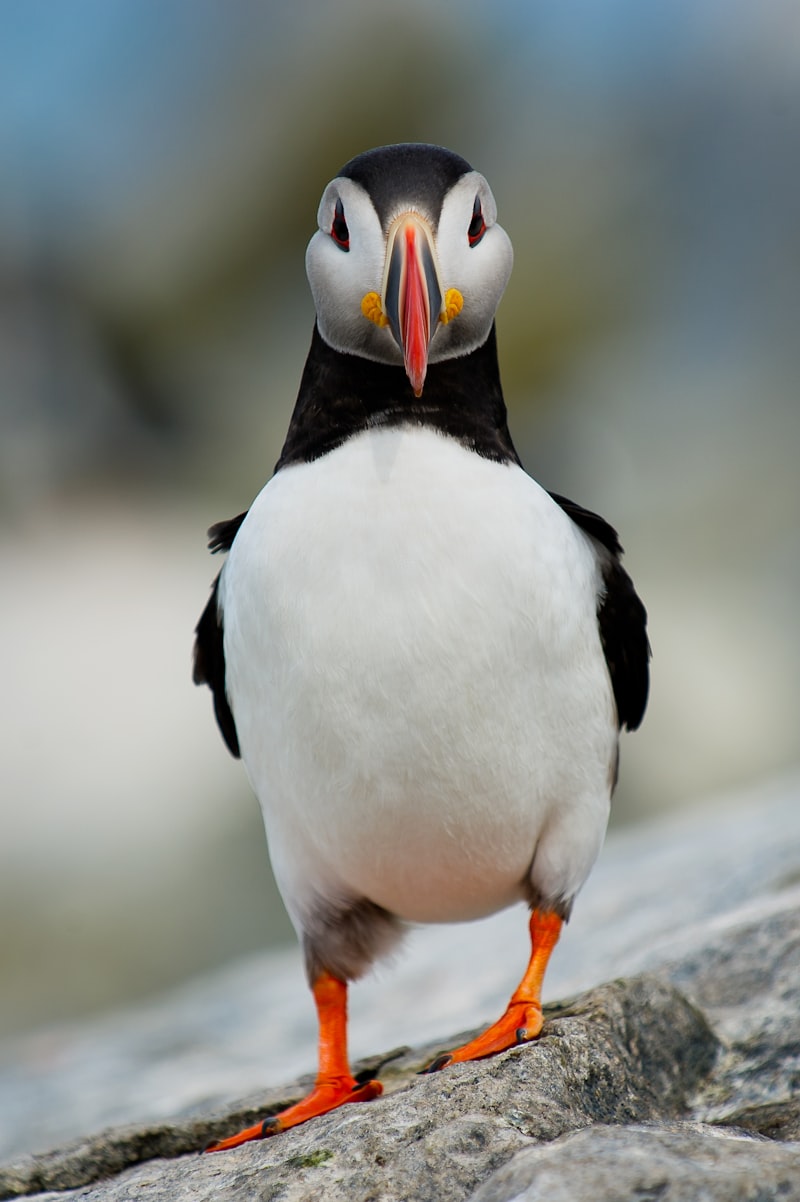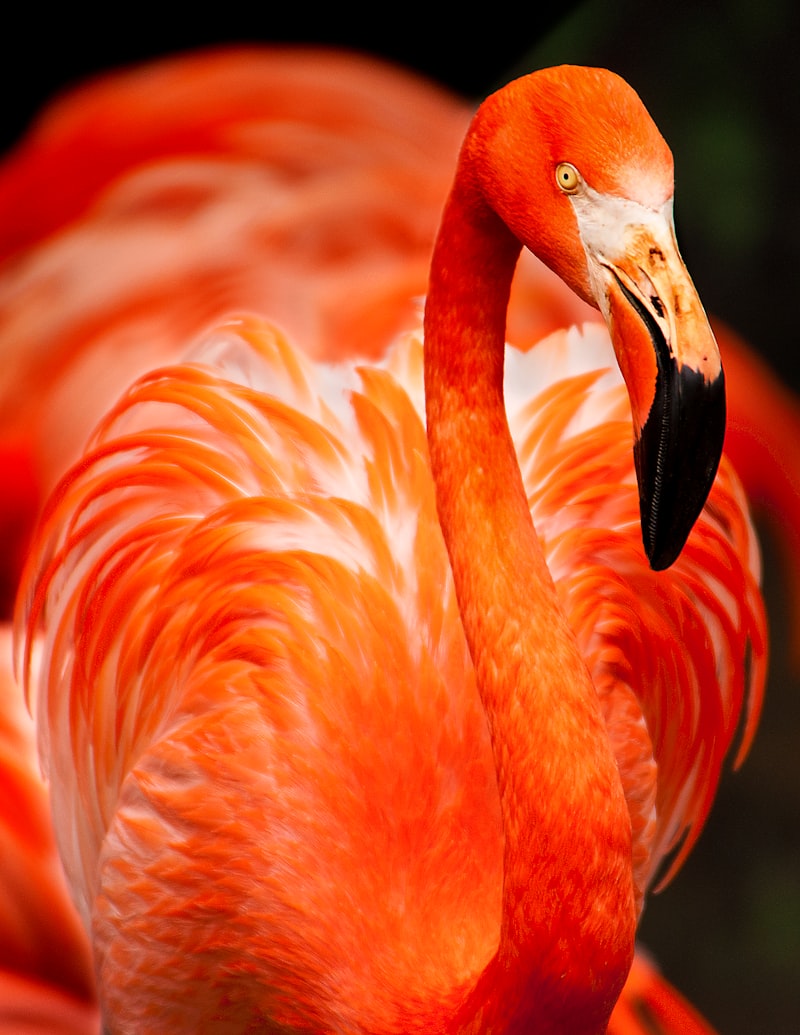Nocturnal birds have evolved remarkable flight strategies that enable them to navigate and hunt efficiently in the dark. Unlike their diurnal counterparts, these birds face unique challenges such as limited visibility and navigating through varied terrain under cover of darkness. To overcome these challenges, they have developed specialized adaptations and behaviors.
One of the most intriguing flight strategies nocturnal birds employ is silent flight. Owls, for example, have specially designed feathers that reduce turbulence and minimize sound production during flight. This adaptation is crucial for their hunting success, allowing them to approach prey silently without alerting them.
In addition to silent flight, nocturnal birds often have enhanced auditory senses. Their ability to locate prey by sound alone is extraordinary. Barn owls, with their heart-shaped facial discs, can pinpoint the rustle of a mouse in the grass from several meters away. This acute hearing not only aids in hunting but also helps them avoid obstacles during flight.
Another fascinating adaptation is their reliance on low-light vision. Nocturnal birds have large eyes relative to their body size, allowing more light to enter and enhancing their ability to see in dim conditions. Additionally, some species, like nightjars, have reflective eye structures called tapeta lucida that amplify available light, further improving their vision at night.
Flight patterns of nocturnal birds also vary depending on their hunting strategies. Some species, like nightjars and nighthawks, exhibit erratic flight patterns known as “moth-like flight.” This unpredictable movement helps them catch insects on the wing, mimicking the flight paths of their prey.
Overall, the flight strategies of nocturnal birds are a testament to their remarkable adaptations for survival in low-light environments. From silent flight and acute hearing to enhanced vision and specialized hunting techniques, these birds have honed their skills over millions of years of evolution to thrive in the darkness of night.
Secrets of Silent Flight: How Nocturnal Birds Navigate the Dark
These creatures, like the elusive owl and the stealthy nightjar, have evolved specialized adaptations to thrive in darkness. Their feathers are uniquely designed to minimize turbulence and noise, allowing them to slice through the air unnoticed. It’s a stealth mode that even military engineers could envy.
But it’s not just about silent wings. Nocturnal birds harness other senses keenly honed for nocturnal navigation. Their exceptional eyesight pierces through the gloom, capturing every detail of the terrain below. Imagine their eyes as natural night-vision goggles, granting them the ability to spot prey and avoid obstacles in the darkest of nights.
Their ears, too, play a crucial role in their nighttime prowess. Enhanced auditory capabilities enable them to detect the faintest rustle of prey or the approach of potential predators. It’s a sensory symphony where every whisper of sound guides their flight path with precision.
Navigating in darkness requires more than just physical adaptations; it demands a deep understanding of the environment. Nocturnal birds possess an internal GPS system that rivals any modern technology. They memorize landmarks, stars, and even the Earth’s magnetic field, allowing them to navigate vast distances without a map.
For these avian pilots, the night sky is not just a canvas but a playground of survival and adaptation. Every flight is a testament to millions of years of evolution, fine-tuning their abilities to thrive where others cannot. They are nature’s silent guardians of the night, leaving us in awe of their mysterious and graceful ways.
Moonlit Mastery: The Evolution of Nocturnal Bird Flight Techniques
As the sun sets and darkness blankets the sky, a fascinating realm of nocturnal avian prowess unfolds. Birds adapted to nighttime flight have honed remarkable skills over millennia, navigating through the shadows with unparalleled precision. What makes their flight so exceptional under the moon’s gentle glow?
These birds, from owls to nighthawks, have evolved specialized adaptations that maximize their efficiency in low-light conditions. Their wings are designed not only for swift movement but also for silent gliding, crucial for stealthy hunting. Imagine the ethereal sight of an owl swooping noiselessly through the night, its wings a marvel of aerodynamic perfection.
One key aspect of nocturnal flight mastery lies in the birds’ keen senses. While their vision in dim light is exceptional, they also rely heavily on other senses such as hearing. This sensory acuity allows them to detect prey rustling in the undergrowth or the faint flutter of insect wings, pinpointing targets with astonishing accuracy.
Moreover, these creatures have mastered the art of conserving energy during flight. Their flight patterns often involve gliding and hovering, minimizing the energy expended while maintaining precise control over their movements. This efficiency is not just a matter of survival but a testament to the evolutionary adaptations that have sculpted these birds into nighttime specialists.
In the vast tapestry of nature, each species of nocturnal bird exhibits its own unique adaptations and behaviors. From the acrobatic feats of nightjars to the haunting calls of owls, each aspect of their flight reflects a finely tuned adaptation to the challenges of the nocturnal world.
Understanding the evolution of these nocturnal bird flight techniques unveils a deeper appreciation for nature’s ingenuity. It highlights how each adaptation, from wing structure to sensory perception, contributes to their ability to thrive in the darkness. Witnessing these birds in flight under the moonlit sky evokes a sense of wonder and admiration for the intricate balance of nature’s design.
Invisible Wings: Unraveling the Stealth Tactics of Night Hunters
Owls, with their velvety feathers designed for silent flight, epitomize the essence of stealth. Their wing structure is specially adapted to minimize turbulence and noise, allowing them to approach their prey with ghostly silence. Like phantoms of the night, they swoop down upon unsuspecting rodents with pinpoint accuracy, a testament to their unrivaled precision in the dark.
Bats, the only mammal capable of sustained flight, exhibit a different form of aerial mastery. Equipped with sophisticated echolocation systems, they emit ultrasonic pulses that bounce off objects, enabling them to navigate and hunt in complete darkness. Their ability to detect minute variations in sound echoes allows them to intercept insects mid-flight with astonishing efficiency.

Beyond their physical adaptations, these creatures embody a mystical allure, often intertwined with folklore and myth. Owls, revered for their wisdom in various cultures, symbolize both mystery and foresight. Bats, despite their association with darkness and the supernatural, play vital roles in ecosystems by controlling insect populations and pollinating flowers.
The stealth tactics of night hunters extend beyond the physical realm, delving into the realm of strategy and survival. Their mastery of camouflage and patience, coupled with acute senses, ensures their place as apex predators of the night. As guardians of balance in their respective habitats, these creatures inspire awe and respect, their invisible wings a testament to nature’s boundless ingenuity.
From Owls to Nightjars: Diverse Flight Adaptations of Nocturnal Birds
Owls, often regarded as the quintessential nocturnal predator, possess specialized adaptations that make them efficient hunters. Their wings are broad and rounded, allowing for silent flight—a remarkable feat that aids in surprising prey without detection. This stealthy approach is crucial for owls as they swoop down on small mammals or birds in complete darkness, relying heavily on their acute hearing to pinpoint prey.
In contrast, nightjars, also known as goatsuckers, have a different flight strategy tailored to their insectivorous diet. These birds have long, pointed wings and a streamlined body, resembling a moth in flight. This unique morphology enables them to maneuver swiftly through dense foliage, catching insects on the wing with precision. Nightjars are masters of aerial agility, effortlessly twisting and turning as they snatch insects mid-flight—a spectacle of nature’s aerodynamic prowess.
What sets these nocturnal birds apart from their daytime counterparts is their reliance on specialized senses and adaptations to navigate and hunt during nighttime hours. Their eyesight is finely tuned to low light conditions, equipped with a high density of rod cells that enhance their ability to detect movement and discern shapes in the dark.
Overall, the diverse flight adaptations of nocturnal birds—from the silent glide of owls to the acrobatic maneuvers of nightjars—underscore the evolutionary marvels that enable these creatures to thrive in the mysterious realm of the night sky. Each species has honed its skills over millennia, perfectly attuning itself to the challenges and opportunities presented by the cover of darkness.
Navigating the Shadows: How Nocturnal Birds Use Echo Location
Have you ever wondered how birds that roam the night manage to navigate with such precision? Nocturnal birds, unlike their diurnal counterparts, have evolved fascinating techniques to thrive in the darkness, one of which is echolocation. This remarkable ability allows them to perceive their surroundings by emitting sounds and interpreting the echoes that bounce back, akin to a biological sonar system.
Among nocturnal birds, owls are perhaps the most famous for their adept use of echolocation. They emit high-frequency calls, imperceptible to human ears, which bounce off objects in their path. By listening to the returning echoes, owls can accurately pinpoint the location and even size of prey animals, such as rodents, in complete darkness. This skill not only aids in hunting but also helps owls avoid obstacles while flying through dense forests or cluttered environments.
Another group of nocturnal birds known for using echolocation are oilbirds, native to the caves of South America. These unique birds emit clicks at a low frequency and rely on the echoes to navigate through the pitch-dark cave systems where they roost during the day. Their echolocation abilities are so finely tuned that they can distinguish between different textures of surfaces, helping them avoid collisions with cave walls as they fly swiftly in search of fruits and insects.
The process of echolocation involves a sophisticated interplay of biology and physics. Birds like swiftlets, found in Southeast Asia, use echolocation clicks to locate their nests in the darkness of caves where they breed. This capability not only aids in navigation but also enhances their ability to protect their offspring from predators lurking in the shadows.
In essence, the adaptation of echolocation among nocturnal birds showcases the marvels of evolutionary biology. It’s a testament to how nature equips creatures with extraordinary senses to thrive in challenging environments. Next time you hear the soft hoot of an owl or catch a glimpse of a swift and agile oilbird, remember the unseen world they navigate using the power of echoes.
Hunting Under the Stars: The Aerodynamics Behind Night-time Predation
Owls, equipped with silent flight feathers and keen eyesight, embody the essence of nocturnal efficiency. Their wings are designed not only for stealth but also for exceptional maneuverability. This allows them to navigate through dense forests or open fields with minimal disturbance, making them formidable hunters.

The aerodynamics of owl flight are a marvel in themselves. Their wings are broad and soft-edged, reducing turbulence and noise. This specialized design enables them to glide silently towards prey, executing precise mid-air adjustments as they close in for the kill. It’s a testament to evolutionary perfection, where form meets function with deadly accuracy.
Imagine the silent swoop of an owl, its wings slicing through the air like a knife through butter. Every movement is calculated, every feather contributing to the overall stealth and agility required for successful night-time predation. It’s not just about hunting; it’s about mastering the art of surprise and adaptation to the darkness.
In nature’s grand theater, the aerodynamics behind night-time predation showcase a symphony of adaptation and skill. Owls, with their silent flight and precise movements, embody the beauty of efficiency in the hunt. They remind us that even in the darkest hours, nature has perfected strategies that leave us in awe of its ingenuity.
Feathers of the Night: Innovations in Wing Design for Silent Flight
Imagine a bird of prey, its wings stretched wide, navigating through dense forests or stalking prey under the cover of starlit skies. These wings are not merely tools for flight; they are intricate marvels crafted to minimize sound, allowing the bird to swoop down undetected. Engineers and biologists alike have long been captivated by this silent prowess, seeking to replicate and refine it for various applications.
The key lies in the intricacies of feather arrangement and structure. Each feather, meticulously designed and positioned, plays a crucial role in reducing turbulence and noise during flight. It’s akin to nature’s own acoustic engineering, where every detail contributes to the overall stealth capability of the creature.
Modern technological innovations have taken inspiration from these natural wonders. Aircraft and drones now incorporate biomimetic designs, borrowing from the silent flight techniques observed in owls and other nocturnal predators. These innovations are not just about reducing noise but also enhancing efficiency and maneuverability in low-light conditions.
Just as a skilled craftsman selects the finest tools for their trade, so too do engineers meticulously choose materials and shapes to achieve optimal performance. The result is a harmony of form and function, where the sleekness of design meets the demands of practicality. It’s a testament to human ingenuity, harnessing the lessons of nature to push the boundaries of what’s possible in aerospace and beyond.
In the world of silent flight, where every whisper matters, these innovations in wing design continue to astound and inspire. They represent a fusion of biological brilliance and human innovation, promising a future where silence and efficiency soar hand in hand through the night sky.
Frequently Asked Questions
What adaptations allow nocturnal birds to fly silently?
Discover how nocturnal birds achieve silent flight through specialized adaptations such as soft feathers, serrated wing edges, and unique feather structures that reduce turbulence and noise.
Why do some nocturnal birds migrate long distances?
This FAQ explores the reasons behind the long-distance migration of nocturnal birds. It provides insights into the adaptive behaviors developed by these birds to optimize survival, including access to food sources and suitable nesting habitats. The answer delves into how environmental factors and seasonal changes influence their migratory patterns.
What are the unique flight patterns of nocturnal birds compared to diurnal species?
Discover the distinctive flight patterns of nocturnal birds in comparison to diurnal species. Learn about how these birds adapt their flight techniques to navigate and hunt efficiently during the night, contrasting with the flight behaviors observed in birds active during the day.
How do nocturnal birds navigate in the dark?
Learn how nocturnal birds navigate in darkness using specialized adaptations such as keen night vision, enhanced hearing, and a heightened sense of spatial awareness. These birds rely on moonlight, star patterns, and magnetic fields for orientation during nocturnal flights.
How do owls hunt efficiently during nighttime flights?
Discover how owls hunt efficiently during nighttime flights with our concise FAQ. Learn about their specialized adaptations in vision and hearing that allow them to locate prey in darkness, along with their silent flight mechanics that aid in stealthy approaches.



